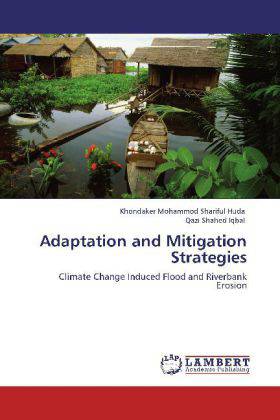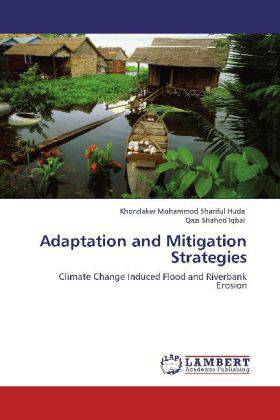
- Afhalen na 1 uur in een winkel met voorraad
- Gratis thuislevering in België vanaf € 30
- Ruim aanbod met 7 miljoen producten
- Afhalen na 1 uur in een winkel met voorraad
- Gratis thuislevering in België vanaf € 30
- Ruim aanbod met 7 miljoen producten
Zoeken
Adaptation and Mitigation Strategies
Climate Change Induced Flood and Riverbank Erosion
Khondaker Mohammod Shariful Huda, Qazi Shahed Iqbal
Paperback | Engels
€ 62,45
+ 124 punten
Omschrijving
There is significant evidence of frequent and rapid erosion and fast rates of bank line retreat along the river Brahmaputra Jamuna within Bangladesh. This study is aimed at quantifying the actual rates of bank erosion along the river based on time series analysis of satellite images and historical maps.One of the main problem of the braided Brahmaputra-Jamuna River in Bangladesh is bank erosion, in places leading to hundreds of meters of bank retreat annually. Analysis of the Landsat images shows that, over the whole river, riverine islands most often persist from 1 to 7 years, but 30% have lasted for 14 years or more. Accretion has taken place in the middle and lower reaches north of the east bank and in the extreme north of the west bank between 1973 and 2010. Bangladesh is likely to be among the countries that are the worst affected by climate change. The Government of Bangladesh is acutely conscious of this, and has in fact been preparing to face this challenge for several years now. We realize that Climate Change is now an environmental as well as a developmental issue.
Specificaties
Betrokkenen
- Auteur(s):
- Uitgeverij:
Inhoud
- Aantal bladzijden:
- 72
- Taal:
- Engels
Eigenschappen
- Productcode (EAN):
- 9783846536360
- Verschijningsdatum:
- 23/05/2012
- Uitvoering:
- Paperback
- Afmetingen:
- 152 mm x 220 mm
- Gewicht:
- 118 g

Alleen bij Standaard Boekhandel
+ 124 punten op je klantenkaart van Standaard Boekhandel
Beoordelingen
We publiceren alleen reviews die voldoen aan de voorwaarden voor reviews. Bekijk onze voorwaarden voor reviews.








